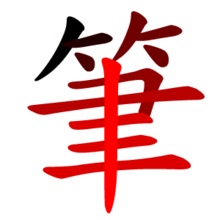 Japanese
Hiragana Katakana Kanji Japanese
Hiragana Katakana Kanji
Japanese language learning
information including:
Hiragana -
pronunciation and writing
Katakana -
pronunciation and writing
Kanji - grades 1-6
(教育漢字 Kyōiku kanji)
Vocabulary -
nouns, verbs, adverbs, and adjectives |
|
|
|
|
| |
 Japanese
Sounds in Romaji Japanese
Sounds in Romaji
This page explains how to write the 69 basic sounds of
Japanese in romaji. The following table contains the basic sounds
along with the 33 combination sounds. |
|
|
|
|
|
|
Reading order - the table
above should be read in the following order. |
- read the table from top to bottom
and then from right to left
- a
i u e o
....
ka ki
ku ke
ko
.... etc.
- read the ya, yu, yo combination
sounds from top to bottom and then from right to left
- ya yu
yo
....
kya kyu
kyo
.... sha shu
sho .... etc.
|
|
Basic Japanese sounds - the
basic Japanese sounds, written here in romaji, are formed by
combining a consonant with a vowel. |
- a few examples of forming Japanese
sounds
- k +
a =
ka
- n
+
u
=
nu
- r +
o =
ro
- w +
a =
wa
|
|
Combination Japanese sounds -
the combination Japanese sounds, written here in romaji, are
formed with a consonant and either ya,
yu, or yo. |
- the combination Japanese sounds are
formed with either ya, yu, yo, and a consonant
- k +
ya =
kya
- n +
yu =
nyu
|
|
|
Exceptions - there are
exceptions to the pronunciation of Japanese sounds, 7 for the
basic sounds and 9 for the combination sounds. All
exceptions are shown in the gray areas of the table. |
- shi, chi, tsu, and
ji
are exceptions to the basic pronunciation pattern
- tsu is pronounced as in
the Japanese word tsunami
- hu is
only pronounced as hoo
in hoop,
however, fu is used when
typing on a keyboard to get the hiragana, katakana, and
kanji equivalent of the sound hu.
For example, Japanese people pronounce France as huransu,
but type furansu when typing it on a keyboard.
- ha can
also be pronounced as wa
- he can
also be used as e
- sha, shu, sho, cha, chu, and
cho all pronounce the
"y" sound but drop the "y" when writing in
romaji
|
|
Sound equivalents - each sound written in romaji
has written hiragana and katakana equivalents. |
- example of sound written in romaji,
hiragana, and katakana
- sound bop = romaji a =
hiragana あ = katakana ア
|
|
Conversation examples - using romaji,
you can easily begin communicating in Japanese |
- conversation examples written in romaji and
Japanese
- Good afternoon.
(hello)
-
ko +
n +
ni +
chi +
wa =
Konnichi wa.
- こんにちは。
- How are you?
-
o +
ge +
n +
ki +
de +
su +
ka = Ogenki desu ka?
- お元気ですか。
- Fine, thank you.
-
ge +
n +
ki +
de +
su =
Genki desu.
- 元気です。
- How about you?
-
a +
na +
ta +
wa = Anata wa?
- あなたは。
- Goodbye.
(long-term)
-
sa +
yo +
u +
na +
ra = Sayounara.
- さようなら。
|
|
|
|
 Japanese
Hiragana Katakana Kanji
Japanese
Hiragana Katakana Kanji